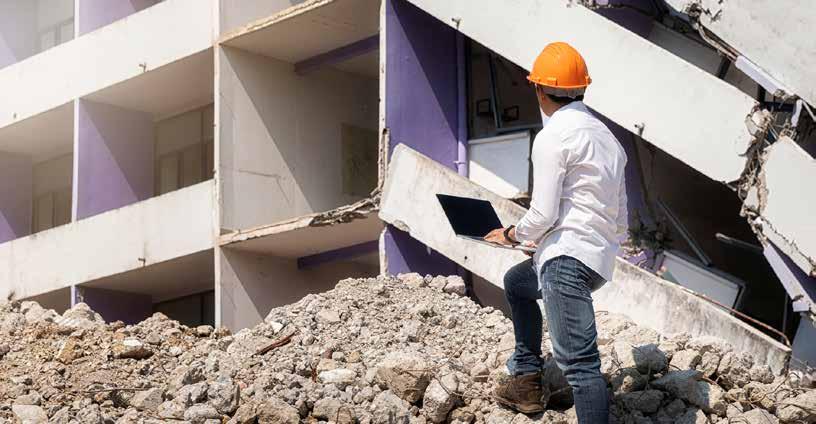EDITOR'S NOTE
COORDINATION OF EFFORTS THE NOVEL CORONAVIRUS continues to dominate the news cycle, with 67 COVID-19 presumed and confirmed cases in Canada (at time of writing). This number is expected to grow as more people are tested for the virus. As it does, there is the possibility of a pandemic. Canadian health officials continue to closely monitor the situation and plan for the potential of local spread, informed by lessons learned from 2003’s severe acute respiratory syndrome (SARS) outbreak and ongoing infectious diseases training. This brings me to Proof is in the Pudding. Though not the ‘feature’ story, this article is timely given the coronavirus spread. In an effort to reinforce the significance of proper infection prevention practices (particularly regular hand hygiene) in reducing the transmission of germs, St. Joseph’s Health Centre in Toronto developed an education session called the IPAC Olympics. ‘Played’ by staff on the hospital’s Morrow wing, it was so well-received that other units have requested to take part in the ‘games.’ You can read all about the fun initiative beginning on page 18. Continuing with health and safety measures, the use of personal protective equipment (PPE) by healthcare staff reduces the risk of workplace exposure to highly infectious diseases and, subsequently, their spread. Recently, Hôtel-Dieu Grace Healthcare discovered its PPE storage did not facilitate best practices for donning or hand hygiene, so it embarked on an audit exercise to determine how to best remedy the situation. You can read about it and the results in It’s that Simple. Though the coronavirus is top of mind these days, sustainability and climate change are still major concerns for many. In an effort to reduce heat loss, energy costs and greenhouse gas emissions, New Brunswick’s Horizon Health Network has installed reusable blanket insulation on its steam system components at four of its hospital sites. You can read about the project in Wrapping Up Savings. Then, Journey to Net-Zero explores the transition to the low-carbon future and the impending shift away from steam to hot water heating and focus on heat recovery. To begin, however, we delve into how collaborative design can help make health services work for Indigenous peoples, as seen in two recently completed hospitals, one in the Northwest Territories and the other in Saskatchewan.
Clare Tattersall claret@mediaedge.ca
Reproduction or adoption of articles appearing in Canadian Healthcare Facilities is authorized subject to acknowledgement of the source. Opinions expressed in articles are those of the authors and are not necessarily those of the Canadian Healthcare Engineering Society. For information or permission to quote, reprint or translate articles contained in this publication, please write or contact the editor. Canadian Healthcare Facilities Magazine Rate Extra Copies (members only) 25 per issue Canadian Healthcare Facilities (non members) 30 per issue Canadian Healthcare Facilities (non members) 80 for 4 issues A subscription to Canadian Healthcare Facilities is included in yearly CHES membership fees.
6 CANADIAN HEALTHCARE FACILITIES
La reproduction ou l’adaptation d’articles parus dans le Journal trimestriel de la Société canadienne d’ingénierie des services de santé est autorisée à la condition que la source soit indiquée. Les opinions exprimées dans les articles sont celles des auteurs, qui ne sont pas nécessairement celles de la Société canadienne d’ingénierie des services de santé. Pour information ou permission de citer, réimprimer ou traduire des articles contenus dans la présente publication, veuillez vous adresser à la rédactrice. Prix d’achat du Journal trimestriel Exemplaires additionnels (membres seulement) 25 par numéro Journal trimestriel (non-membres) 30 par numéro Journal trimestriel (non-membres) 80 pour quatre numéros L’abonnement au Journal trimestriel est inclus dans la cotisation annuelle de la SCISS.










